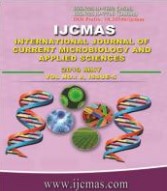


 National Academy of Agricultural Sciences (NAAS)
National Academy of Agricultural Sciences (NAAS)

|
PRINT ISSN : 2319-7692
Online ISSN : 2319-7706 Issues : 12 per year Publisher : Excellent Publishers Email : editorijcmas@gmail.com / submit@ijcmas.com Editor-in-chief: Dr.M.Prakash Index Copernicus ICV 2018: 95.39 NAAS RATING 2020: 5.38 |
Based on astrology, Anand Agricultural University, Anand prepared Nakshatra-Charan wise forecast for four agro-climatic zones of Gujarat from 2005 and 2006. District wise daily forecast was given by AAU’s Monsoon Research Almanac from 2007 to 2012. During 2018, daily rainfall was predicted for 19 districts of Gujarat covering all four zones. During 2018, overall monsoon rainfall (June to October) predicted above normal by 23% for the state as a whole except for Kutch (-0.5%), Panchmahal (-6.3%) and Mahisagar (-37%) districts during June to October 2018. Chances of getting pre-monsoon and post-monsoon rain at many places during May and November 2018 were also predicted. There was less rainfall in June 2018 (-61% for the state as a whole) and highest rainfall had occurred in South Gujarat, i.e. +16.7%, followed by Saurashtra with +34.7%. Between June and September, September will get the highest amount of rainfall (+75.8% followed by August (65.1%). In October month it was predicted more rainfall but didn’t occur. The validation of rainfall forecast on Yes/No basis indicated that average accuracy was 60% from June to October for a state as a whole. Among the four regions, average accuracy was highest in South Gujarat (72.1%) and lowest in North Gujarat (53.1%) for the year 2018.
 |
 |
 |
 |
 |